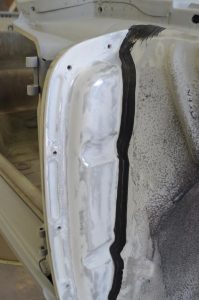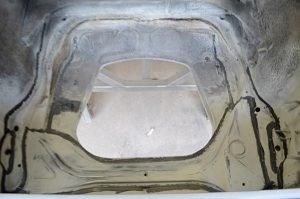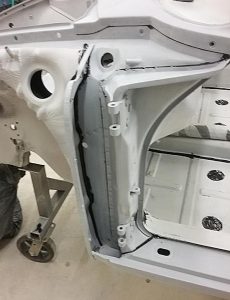Seam Sealer is often an overlooked step of the restoration process to save time and money. Negligence of this critical step can result in moisture seeping through the seams of the unibody, which will eventually cause rust to form between adjacent panels. By seam sealing these newly fabricated joined panels you have blocked off those areas most susceptible to moisture, resulting in years of protection for your restored vehicle.
This two part epoxy-based seam sealer, creates a hard but flexible film over any lapping sheet metal. After painting, it also makes for a smooth transition over the top of lapping panels. Some important areas, like the door jam and inner fender apron, are especially important for keeping moisture at bay. Since the door jam is structural, it is critically important to keep moisture from getting inside this area and compromising the metal from the inside out.
Sealing certain areas for example, such as the boot and engine compartment, are not only important for moisture repelling purposes, but also keeping toxic fumes and gases such as carbon monoxide from entering the cabin of the car.
It might not be one of the most noticed steps in the coating process, but taking the extra time and consideration to seam seal creates a long lasting protective base before final coatings. With this added layer of rust protection and clean looking seams, you will be more confident that your investment of time and money in this stage of the restoration will last the test of time.




